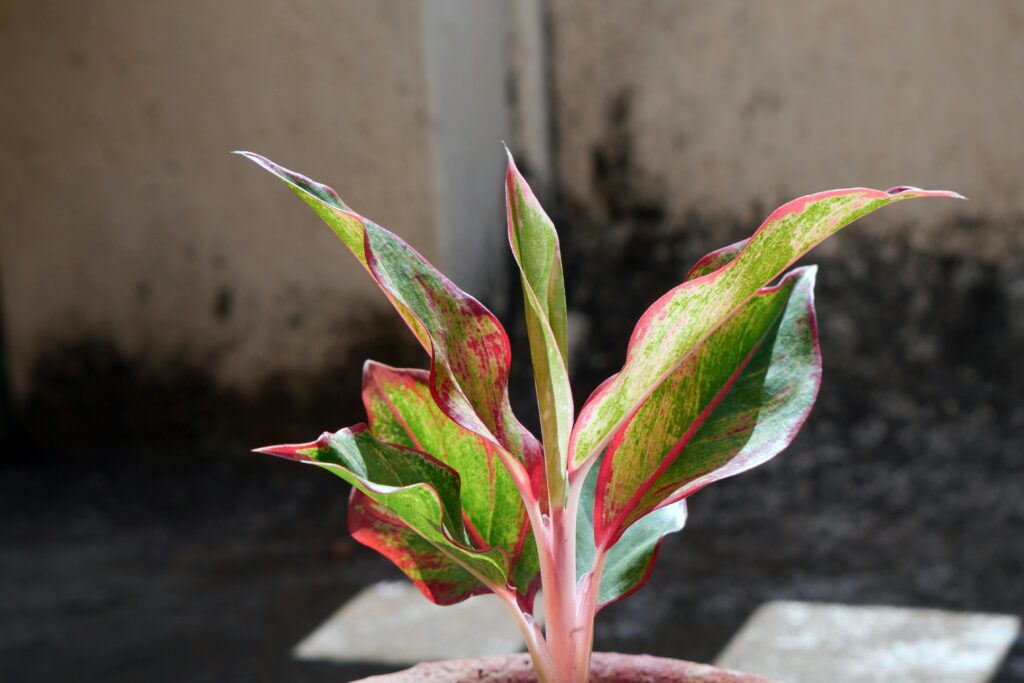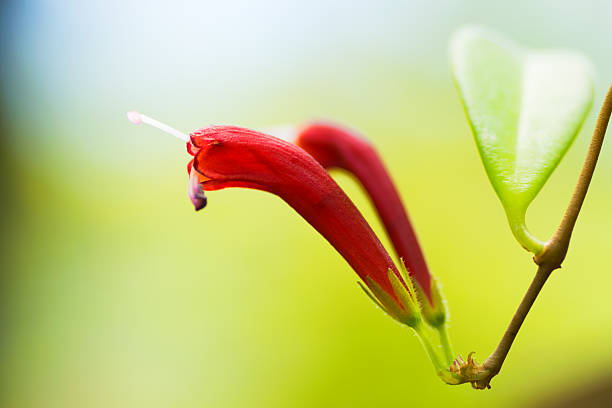Introduction to Lipstick Plants
Do lipstick plants bloom? Yes, lipstick plants indeed bloom, and their striking flowers make them a popular choice for indoor gardening enthusiasts. These tropical houseplants are scientifically known as Aeschynanthus and are native to the humid environments of Southeast Asia. Lipstick plants are named for their vibrant red or orange tubular flowers that resemble a tube of lipstick. The blooms emerge from dark maroon buds and create a dazzling display of color. Their trailing, vine-like growth makes them perfect for hanging baskets, where the flowers can cascade elegantly over the edges.
There are various factors that influence the blooming of lipstick plants. Understanding these factors can help you cultivate a flourishing plant with frequent and plentiful blooms. Key considerations include the right light conditions, soil type, watering regimen, and maintaining appropriate humidity levels. Different varieties of lipstick plants each bring unique flower and foliage traits to your home. From the classic Aeschynanthus radicans to the curly-leafed varieties like ‘Curly Lipstick’ and the stunning ‘Black Pagoda,’ there’s a lipstick plant to match every gardener’s preference.
Taking proper care of your lipstick plant also involves occasional pruning to maintain its shape and encourage more blooms. Deadheading spent flowers can further promote blooming and keep your plant healthy. In summary, with the right care and conditions, lipstick plants can be a delightful and colorful addition to your indoor garden, bringing vibrant blooms and a touch of tropical flair to your home. Whether you’re a seasoned plant enthusiast or a beginner, understanding how these plants thrive will ensure that your lipstick plant not only survives but flourishes and blooms beautifully year-round.

Understanding Lipstick Plant Varieties
Do lipstick plants bloom year-round or are there specific varieties that are more prolific bloomers? Understanding lipstick plant varieties can help you answer this question effectively. There are several types of lipstick plants, each with unique characteristics that may influence their blooming patterns.
Primarily, lipstick plants belong to the genus Aeschynanthus, and they thrive in tropical climates. One common variety is Aeschynanthus radicans, known for its vibrant red flowers. Another popular type is Aeschynanthus lobbianus, which features deep green, glossy leaves and bright red blooms. Each variety has specific care requirements that can impact the blooming process.
For instance, some may prefer higher humidity levels, while others might need more intense light. Recognizing these differences can help you optimize your care regimen and encourage blooming. Additionally, some varieties such as the ‘Curly Lipstick Plant’ have uniquely shaped leaves that provide added ornamental value. Understanding the unique needs and characteristics of each variety ensures you can create the ideal environment. This, in turn, maximizes the chances for blooms and maintains the overall health of your lipstick plant.

Optimal Conditions for Lipstick Plants to Bloom
Do lipstick plants bloom? Yes, lipstick plants do bloom, and achieving vibrant and frequent blooms relies on creating optimal conditions. Understanding the specific needs of your lipstick plant is crucial for encouraging blooming.
Light Requirements
Lipstick plants thrive in bright, indirect light. A south or east-facing window is ideal. Too much direct sunlight can scorch the leaves, while insufficient light can prevent blooming.
Soil and Watering Needs
The right soil is essential for lipstick plant health. Use a well-draining potting mix to prevent root rot. Watering should be consistent but moderate; allow the soil to dry out slightly between waterings. Overwatering can lead to soggy soil, which can inhibit blooming.
Temperature and Humidity
Lipstick plants prefer warm temperatures, ideally between 65-75°F (18-24°C). They thrive in high humidity, so maintaining a humid environment can boost blooming. Avoid placing the plant near vents or drafty areas that could cause temperature fluctuations.
Fertilizing for Better Blooms
Feeding your lipstick plant can encourage more blooms. Use a balanced, water-soluble houseplant fertilizer diluted to half-strength during the growing season. Fertilize every month in spring and summer when the plant is actively growing.
Pruning and Maintenance
Pruning can also stimulate bloom production. Trim the lipstick plant regularly to maintain its shape and encourage new growth. Remove any dead or yellowing leaves to keep the plant healthy. Consistent care pays off with abundant and gorgeous flowers.

Common Problems and Solutions
Understanding why do lipstick plants bloom inconsistently is crucial for maintaining their vibrant flowers. Lipstick plants can face several common issues that hinder their growth and blooming. Addressing these problems promptly ensures your plant remains healthy and visually appealing.
Dropping Leaves
One common problem with lipstick plants is dropping leaves. This issue often arises due to inconsistent watering. Lipstick plants need a consistent watering schedule to thrive. Overwatering can cause root rot, leading to leaf drop, while underwatering can also stress the plant, causing it to shed leaves. The solution is to water the plant thoroughly but allow the top inch of soil to dry out between watering sessions. Don’t let the plant sit in water; ensure excess water drains away.
Wilted Appearance
A wilted appearance in lipstick plants often indicates water stress or poor humidity levels. Lipstick plants prefer a humid environment, similar to their native tropical habitats. If the air in your home is too dry, especially during winter, this can cause the leaves to wilt and look unhealthy. To remedy this, maintain consistent soil moisture but avoid soggy soil. Increasing the humidity around the plant by misting it regularly or placing it near a humidifier can also help.
Slow Growth
If your lipstick plant is experiencing slow growth, it might not be getting enough light or nutrients. Ensure the plant is placed in bright, indirect sunlight to promote healthy growth and blooming. Insufficient light can stifle growth and reduce the likelihood of flowering. Additionally, a lack of nutrients can hinder growth. Consider fertilizing with a balanced, water-soluble houseplant fertilizer diluted to half strength every month during the growing season.
Pests and Diseases
Pests such as aphids, mealybugs, and spider mites can also be problematic for lipstick plants. These pests can cause various issues, from stunted growth to leaf discoloration and distortion. To manage pest problems, regularly inspect your plant for signs of infestation. If pests are detected, treat the plant with insecticidal soap or neem oil, following the product’s instructions. For diseases, root rot due to overwatering is common. Ensure proper watering practices and adequate drainage to prevent this issue.
By troubleshooting these common problems and implementing effective solutions, you can help your lipstick plant flourish and maintain its beautiful blooms. Ensuring optimal care practices will not only answer why do lipsticks plants bloom inconsistently but also contribute to a thriving, attractive houseplant.

How to Encourage More Blooms
To encourage more blooms on your lipstick plant, you need to provide the right light, soil, and watering conditions. Ensuring these optimal conditions will make a significant difference in how well your plant blooms. Let’s break down the key aspects.
Light Requirements
Lipstick plants prefer bright, indirect light. Too much direct sunlight can scorch their leaves, while insufficient light can reduce blooming. Placing your plant near an east or south-facing window provides the ideal light conditions Light quality is crucial for blooming, so consider using grow lights if natural light is inadequate.
Proper Soil Composition
The soil for lipstick plants must be well-draining to prevent root rot. A mix of potting soil with perlite or orchid bark works best. Ensure the container has drainage holes to allow excess water to escape, maintaining the health of the roots. A well-draining soil mix will supply the necessary nutrients to encourage blooming.
Watering Needs
Consistent watering is vital for the health and blooming of lipstick plants.
Water the plant thoroughly, allowing the top inch of soil to dry out between waterings. Avoid letting the plant sit in standing water, as it can cause root rot. Proper watering encourages strong growth and boosts the likelihood of blooming.
Fertilizing for Better Blooms
Lipstick plants benefit from regular feeding during their growing season. Use a balanced, water-soluble houseplant fertilizer diluted to half strength every two weeks. Fertilizing promotes vigorous growth and increased blooming. Reducing fertilization during the winter months helps mimic the plant’s natural cycle.
Pruning and Maintenance
Regular pruning can also help encourage more blooms. Removing dead or yellowing leaves directs the plant’s energy towards new growth and flower production. Prune the plant back after blooming to encourage bushier growth and more flowers in the next cycle. Maintaining the plant by removing dead flowers and leaves ensures ongoing health and bloom production.
Temperature and Humidity
Lipstick plants thrive in temperatures between 65°F and 80°F (18°C and 27°C). They prefer higher humidity levels, so consider placing a humidifier near the plant or using a pebble tray with water. Avoid drafty areas and sudden temperature changes, as they can stress the plant. Stable environmental conditions promote consistent blooming. Read more.
Seasonal Considerations
Understanding the blooming cycle of lipstick plants is essential. They typically bloom in late spring and summer. Adjusting care routines to match the seasons ensures the plant’s energy is focused on blooming at the right time. By following these guidelines, you can create an environment where lipstick plants bloom abundantly, adding vibrant color to your space. With the right care, your lipstick plant will reward you with stunning blooms throughout the year. Encouraging more blooms involves understanding and catering to the plant’s specific needs, ensuring a healthy, flourishing lipstick plant that blooms beautifully.

Caring for Lipstick Plant After It Blooms
Proper care after the initial blooming phase is essential for encouraging repeated blooms and maintaining the plant’s overall health. Once the lipstick plant has finished blooming, it’s essential to trim away spent flowers. Pruning will not only enhance the plant’s appearance but also promote new growth. Use sterile scissors or pruning shears to remove these spent blooms. Pay attention to the watering needs of your lipstick plant post-bloom.
While the plant needs regular watering, it’s crucial not to let the soil become waterlogged. Ensure the pot has adequate drainage to prevent root rot. Adjust the frequency of watering based on the season. During the plant’s resting period, usually in the winter, reduce the amount of water. Additionally, provide your lipstick plant with balanced liquid fertilizer once every month. A high-quality houseplant fertilizer diluted to half strength is usually sufficient. This will supply essential nutrients that encourage healthy growth and future blooms.
Maintaining a stable environment is crucial. Lipstick plants prefer a warm, humid environment. Avoid placing them in drafty locations or where temperatures fluctuate dramatically. Consider using a humidity tray or a room humidifier to maintain the right conditions. In summary, caring for a lipstick plant after it blooms involves pruning, adjusting watering practices, fertilizing, and maintaining appropriate environmental conditions. These steps will guarantee that your plant remains healthy and is more likely to bloom again.

Conclusion
To ensure your lipstick plant blooms consistently, focus on providing optimal light, watering adequately, and maintaining proper temperature and humidity levels. Pruning and fertilizing also play crucial roles in promoting healthy growth and encouraging more blooms. Understanding the common problems such as dropping leaves, wilted appearance, and slow growth can help you address any issues promptly.
By following these guidelines, you can enjoy the beautiful flowers of the lipstick plant throughout the blooming season. Remember, a happy plant is a flowering plant, so give your lipstick plant the care it deserves, and it will reward you with delightful blooms.
